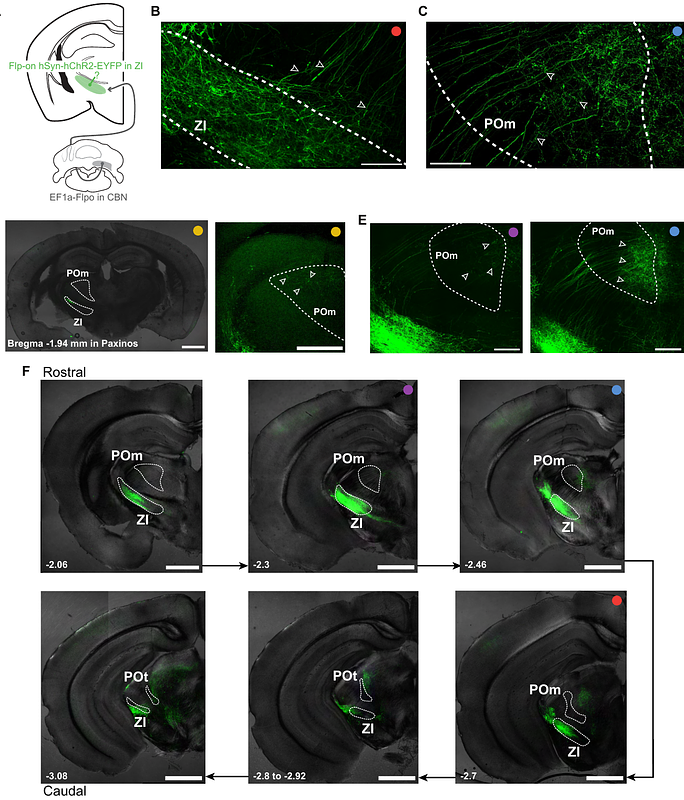Cerebellum instructs plasticity in the mouse primary somatosensory cortex

Cerebellum instructs plasticity in the mouse primary somatosensory cortex
Silbaugh, A.; Koster, K. P.; Hansel, C.
AbstractSensory experiences map onto distributed neural networks and may activate plasticity processes that in some brain areas are supervised by instructive signals. What remains unknown, however, is if such instructive signals influence plasticity beyond local circuits. Here, we show that optogenetic activation of climbing fibers, which provide instructive signals in cerebellar plasticity, suppresses whisker response potentiation in L2/3 pyramidal cells of the primary somatosensory cortex of mice. Using two-photon imaging and chemogenetics, we find that plasticity is controlled by modulating activity levels of VIP- and SST- positive interneurons. Transsynaptic labeling identifies zona incerta to thalamic posterior medial nucleus projections as the main pathway for cerebellar output reaching cortex. Our findings show that neocortical plasticity is not self-organized but depends on supervision by the olivo-cerebellar system.